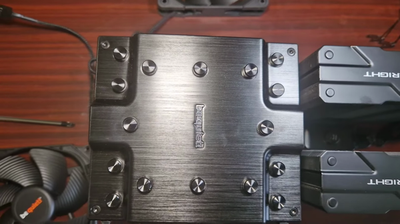
Using the Thermalright Peerless Assassin 120 Black CPU Cooler (2024)
My thoughts on the Thermalright Peerless Assassin 120 Black Cooler: efficient cooling, broad compatibility, sleek design, noise, and value.
Introduction
The Thermalright Peerless Assassin 120 Black CPU cooler has gotten good reviews for its cooling capacity versus price point. Below I elaborate on why this cooler stands out and I address some of the challenges one might face when considering it for a new pc build.
Some photos (click to enlarge)
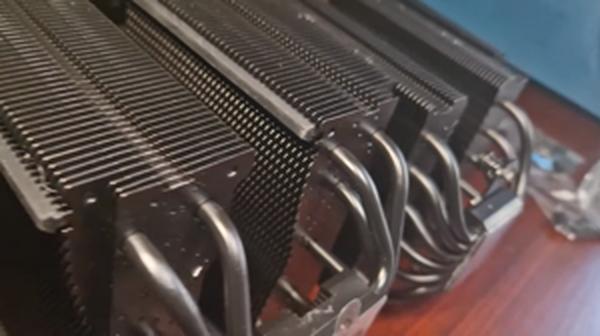
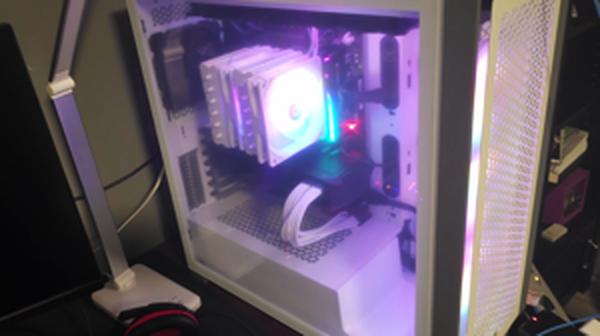
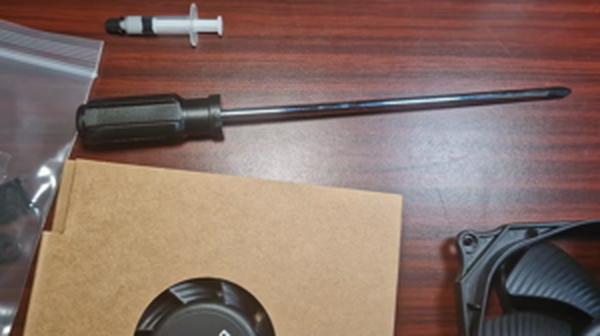
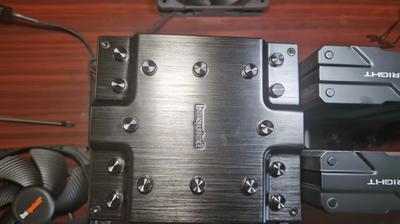
Specs of the Thermalright Peerless Assassin 120 Black CPU Cooler
- Release Year
- Brand
- Compatible Devices
- Material
- Maximum Rotational Speed
- Noise Level
- Power Connector Type
- Product Dimensions
- Voltage
- Wattage
Prices
Impressive Cooling Performance and Heat Dissipation
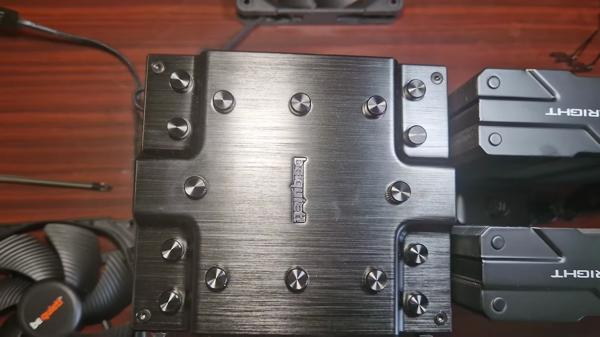
When it comes to keeping your CPU cool under the heat of intensive tasks, the Thermalright Peerless Assassin 120 Black does not disappoint. This powerhouse of a cooler brings to the table a robust set of features that are hard to ignore:
Efficient heat dissipation with a nanoscale black paint coating designed to optimize cooling surface area.
A hefty TDP rating of 245W, making it suitable for high-performance CPUs.
The innovative AGHP (Anti-Gravity Heat Pipe) technology that ensures heat pipes function optimally regardless of orientation – a big win for builders concerned about case compatibility and cooling performance.
Dual PWM fans pushing a combined air flow of over 66 CFM while maintaining noise levels below 25.6 dB(A).
However, it's not all roses; there are some thorns to be aware of. The sheer size of the unit can be a bit demanding when it comes to case real estate, potentially leading to tricky situations during installation, especially around RAM slots or motherboard power connectors. Additionally, while the offset asymmetric layout is designed to avoid interference with the first graphics card slot, this might not be the case for all motherboard layouts.
Installation was a tad more complicated than your run-of-the-mill coolers, particularly on the Intel LGA 1700 socket where the manual left a lot to be desired. However, a quick online search brought me to a helpful video that made the process a breeze. For most, this will be a one-time setup annoyance, but it's worth flagging for first-time builders or those less patient among us.
I've had my share of experiences with various cooling solutions—ranging from stock coolers to the swankiest AIOs—and I've gotta say, the Peerless Assassin punches well above its weight class. This cooler has been a game-changer in my rig, lowering CPU temperatures by up to 50 degrees Celsius in a stress test comparison with the stock cooler on my Ryzen 7 5800XD. The full black design also gives it a menacingly sleek look that should complement most builds.
Performance aside, it's the peace of mind that comes with such a cooling solution that's been the biggest benefit. Knowing that your CPU temperatures are well in check, even during a marathon gaming session or while encoding videos, is a reassurance that every PC enthusiast can appreciate. While Thermalright may not be as household a name as some other cooler brands, the Peerless Assassin 120 shows they're capable of delivering top-tier performance without the usual premium price tag.
Versatile Compatibility and Installation Insights

In the realm of CPU coolers, finding one that ticks all boxes for compatibility with different CPUs and ease of installation is like searching for a diamond in the rough. Let's cut to the chase, the Thermalright Peerless Assassin 120 Black stands out as one of those rare finds. I've done my fair share of PC builds, and boy, the versatility of socket support this cooler offers is a breath of fresh air. We're looking at compatibility with a variety of Intel sockets including LGA1150/1151... You get the drift – it's a laundry list. AMD support isn't left out with AM4 and the newer AM5 right in there. Thank goodness for that.
Now, for the installation insights:
Mounting Hardware: The cooler comes with all the different mounting plates needed for the variety of sockets it supports.
Backplate Issue: A huge heads-up -- if you tossed your original backplate, you're in for a rude awakening, as you'll need it for this installation.
Memory Slot Overhang: It's big, I won't sugarcoat it. You have to install your memory before this monster if you don't want a headache.
Power Cable Maneuvering: Due to its size, wrangling power cables around it can be a challenge. Forewarned is forearmed.
Thermal Paste Choices: You get some Thermal Right TF7 paste in the box, but if you have a preference, nothing's stopping you.
That said, it's not without its quirks. The fan clips, they're short, and in my attempts to get them on, I bent a few fins. It's not a deal-breaker, but seeing those fins crumple was not pleasing to my builder's soul. And size – it's both a blessing and a curse. Its form factor could make it a mismatch for smaller cases or those with peculiar internal layouts.
I hooked up this cooler on a 5700g build, and the thermals are nothing short of stellar. On top of this, in terms of the actual installation process, it's pretty straightforward. Most of the headache can be mitigated if you do some homework beforehand. A quick YouTube search for installation guides is a lifesaver, particularly if patience isn't your strongest suit (no judgment, it's not mine either).
In conclusion, while the Thermalright Peerless Assassin 120 Black might have its minor gripes, such as the logo placement and fan clip length, the pros heavily outweigh the cons. The versatility and compatibility span the Intel and AMD spectrum, and once you navigate the installation curveballs, it's smooth sailing into cool CPU territory.
Design Appeal and Noise Levels

When it comes to the Thermalright Peerless Assassin 120 Black, there's a lot to talk about - its style, build quality, and the noise levels I've found after setup.
Design:
Big, bold, and black, the twin towers of the cooler have a sleek nano-spray coating that not only protects but also gives off that high-end vibe.
The branding on the side is a bit of a bummer for those who prefer a minimalist look – I wish they'd reconsider the placement or at least tone it down.
Noise Levels:
The dual TL-C12B fans are a surprising blend of power and silence, maintaining low noise levels even under load, which is a huge win in my book.
The inclusion of PWM control means these fans are smart, adjusting speed based on the CPU's needs and keeping the decibels to a minimum.
The minute I peeled back the packaging, the blacked-out aesthetic jumped out at me - this cooler means business. It looks great in a clear-sided case, but that’s if your case can handle its size; it's a bit of a unit, to be honest. The large dimensions are both a pro and a con - it's a striking centerpiece in a build, but it can also overshadow other components and make access around the motherboard a bit finicky.
Installing the fans before mounting the heatsink is a text-book move with any large cooler; however, the fan clips could do with a rethink. They do their job, but there's undeniable tension getting them in place, enough to bend a few fins on my unit. Not a dealbreaker but it's those little niggles that can pierce the bubble of an otherwise smooth setup experience.
Noise-wise, I'm seriously impressed. I half-expected a cooler this size to sound like a jet engine but the fans hardly make a whisper. Even cranking the CPU on more intensive tasks, the Peerless Assassin just purrs - it's honestly hard to tell if it's running without looking.
Despite the aforementioned design touches that could be improved, the overall appeal of this cooler comes down to its subtle yet aggressive styling and the quiet operation that does not compromise on cooling performance. You're not going to hear it chugging along despite the significant heat it's managing, and that's something we all appreciate, whether in the heat of gaming or just crunching through daily tasks.
When you're factoring in looks, performance and noise, the Peerless Assassin checks a lot of boxes. It's not perfect - I'm still scratching my head about the branding and the fan mounting process - but it's pretty close. If you've got the space in your build and your priority is cooling power without the racket, this cooler is poised to be a stealthy, stylish addition to your setup. For those interested in similarly quiet cooling solutions, you might consider my experience with the DeepCool AK620 Dual-Tower CPU Cooler.
Value for Money and Overall Experience

When it comes to finding a balance between price and performance, the Thermalright Peerless Assassin 120 Black certainly stands out. It's clear that in an ocean of CPU coolers, this one has made waves among budget-conscious builders who don't want to compromise too much on quality. From my experience, here's a quick rundown:
Pros:
Affordable price without sacrificing much on performance
Efficient heat dissipation that rivals more expensive units
Quiet operation making it suitable for home and office setups
Cons:
The sheer size may not suit smaller cases or builds with tight internals
Installation can be tricky for newcomers, especially with the backplate requirement
The fan clips are short and can potentially bend the cooling fins
I've always leaned towards getting the most bang for my buck, and that's what drew me to this cooler initially. The performance is solid—my CPU temps have seen a significant decline and the dual fan setup isn't as noisy as I feared. Plus, the aesthetics are surprisingly good, which was an added bonus when I opened up my rig.
However, it's not all roses. The install process had its moments. Getting around the cumbersome size to connect power cables was a bit of a jigsaw puzzle, and I definitely recommend slotting your RAM in before wrestling with this behemoth. Also, say goodbye to impulse builds if you've tossed out your motherboard backplate; it's crucial for installation.
Another quirk I found was with the fan clips. They're stubbornly tight and slightly too short, which means you risk bending the fins to get them to snap on. I would advise a gentle touch and some patience during this step.
Yet, these gripes are relatively minor when weighed against the hefty price-performance ratio. I don't see the need for an aftermarket backplate if you're mindful when assembling—it's a hassle, sure, but not a dealbreaker.
Despite needing a bit of DIY finesse, the Thermalright Peerless Assassin 120 Black stands as a testament to the idea that you don't have to empty your wallet for competent cooling. It's a purchase I find myself recommending to friends—especially those new to building who want a reliable air cooler without the sticker shock. In conclusion, as someone who can be skeptical of market hyperbole, I must admit, this cooler has earned its stripes and it's clinched a spot in my 'go-to' hardware list for future builds.
Comments (0)
Share